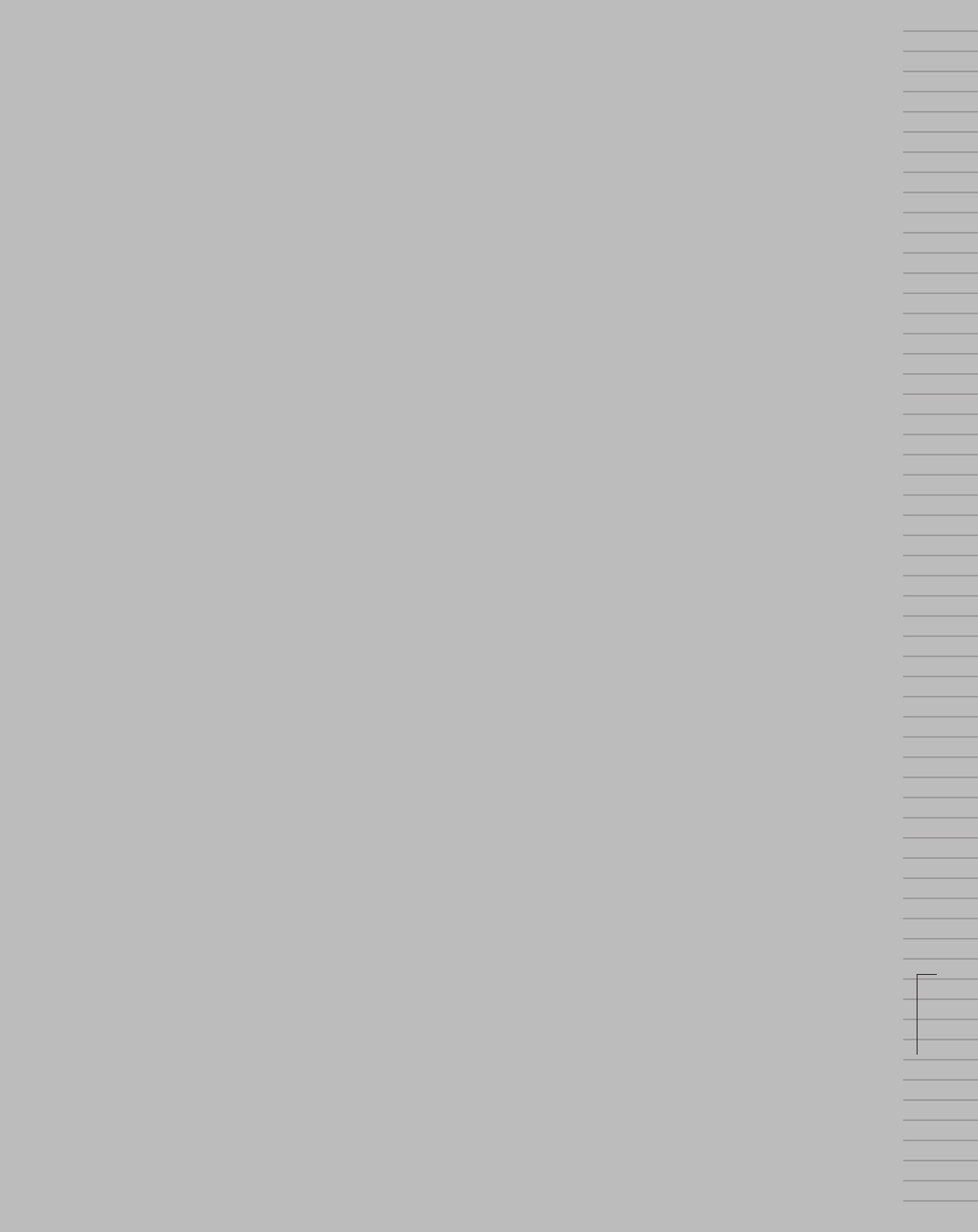
Job No:11-22360 Title:RP-Language of Graphic Design
#175 Dtp:177 Page:150
Job No:11-22360 Title:RP-Language of Graphic Design
#175 Dtp:177 Page:151
(RAY)
150-157_22360.indd 151 11/16/10 9:43:49 AM
(Text)
151150
“Imagination is the beginning of creation. You imagine
what you desire, you will what you imagine and at last
you create what you will.”
GeorGe Bernard Shaw (1856–1950), Irish, Playwright
closure
15
In visual communications,
closure can basically be
described as a visual
illusion. Closure literally
means the act of closing or the condition of being closed. It is also
a definitive finish or conclusion. As human beings, we have an in-
nate need to make sense of what we see; therefore, if we anticipate
clo·sure \'klo
¬
-zh r\ n
1: the process or ability to fill in
missing parts of a visual stimulus;
a Gestalt principle of visual organization
holding that there is an innate tendency
to perceive incomplete objects
as complete
Job No:11-22360 Title:RP-Language of Graphic Design
AC59773 #175 Dtp:177 Page:151
Job No:11-22360 Title:RP-Language of Graphic Design
AC59773 #175 Dtp:177 Page:150
(RAY)
150-157_C59773.indd 151 12/12/10 12:36 PM

Job No:11-22360 Title:RP-Language of Graphic Design
#175 Dtp:177 Page:152
(RAY)
150-157_22360.indd 152 11/16/10 9:43:51 AM
th e la n guag e of gr ap hic d es i gn
(Text)
Historical References
A classic representation of closure in art
history is in Michelangelo’s The Creation of
Man on the ceiling of the Vatican’s Sistine
Chapel. Here, God is reaching his pointed
finger outward toward the finger of Adam’s
hand. In our minds, the fingers appear to
touch, symbolically representing creation and
birth. The fingers do not touch, yet they are
perfectly positioned to imply such. If they
were any farther apart, or conversely, if they
were touching, the quality of this critical
compositional relationship, as well as the
visual perception of closure, would be lost.
Visual Characteristics
Closure is completely dependent upon spa-
tial relationships in a composition. It is used
to create visual interest for viewers because it
engages them to complete the composition
in their own mind’s eye.
It is also dependent on the distance
from one object or shape to another. When
related objects are too far apart from one
another, they have no immediate and appar-
ent visual relationship. When related objects
are composed in close relationship to one
(continued on page 154)
1955
Theaterbau von der Antike bis zur Moderne
Zurich, Switzerland
For over forty years, Armin Hofmann
(b. 1920) has devoted his life to teach-
ing art, design, and the principles of visual
perception and communications. His stu-
dents’ works are benchmarks of visual ex-
cellence, as well as the envy of students and
teachers of graphic design worldwide.
In 1937, he studied foundation art at
the Kunstgewerbeschule in Zurich; he also
worked as a draftsman and lithography
apprentice in Winterthur and as a lithog-
rapher and designer in various studios in
Basel, Switzerland.
Hofmann began his career as an
influential educator at the Allgemeine
Gewerbeschile Basel School of Art and
Crafts (later known as Schiule fur Gestal-
tung or ags) at the early age of 26. He fol-
lowed Emil Ruder as the head of its graphic
design department and was instrumental in
developing the graphic design style known
as the International Typographic Style or
Swiss School.
His teaching methods and maxims
were unorthodox and broad based, setting
new standards that became widely known
in design education institutions throughout
the world. His independent insights as an
educator, married with his rich and innova-
tive powers of visual expression, created a
body of work enormously varied—books,
exhibitions, stage sets, logotypes, symbols,
typography, sign systems, and most memo-
rably, posters.
His exhibition poster titled Theater-
bau von der Antike bis zur Moderne for the
Austellung Helmhaus in Zurich is a simple,
compositional study in black and white,
figure–ground, and closure engaging the
viewer with the compositional elements
and principles of asymmetry, tension, con-
trast, and scale.
a form we will always complete it. In human
nature, we are constantly searching for
resolution in everything we see and do. We
have been taught to strive for the perfect
balance in our lives. Even when we experi-
ence something incomplete or imperfect,
we continually look for closure or a better-
balanced sense of resolution.
In personal relationships we always ex-
pect a happy ending. When this doesn’t
occur, we feel unrest and disappointment.
This is a example of our basic human need
for resolution. In visual communications,
closure is an equivalent visual resolution.
x
School of Visual Arts
New York, New York, USA
O
New York, New York, USA
Job No:11-22360 Title:RP-Language of Graphic Design
#175 Dtp:177 Page:152
(RAY)
150-157_22360.indd 152 11/15/10 7:12:11 PM
Get The Language of Graphic Design now with the O’Reilly learning platform.
O’Reilly members experience books, live events, courses curated by job role, and more from O’Reilly and nearly 200 top publishers.

